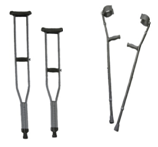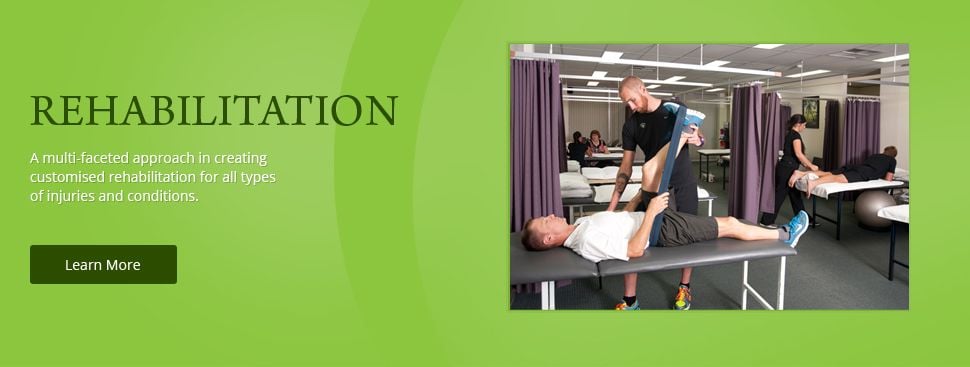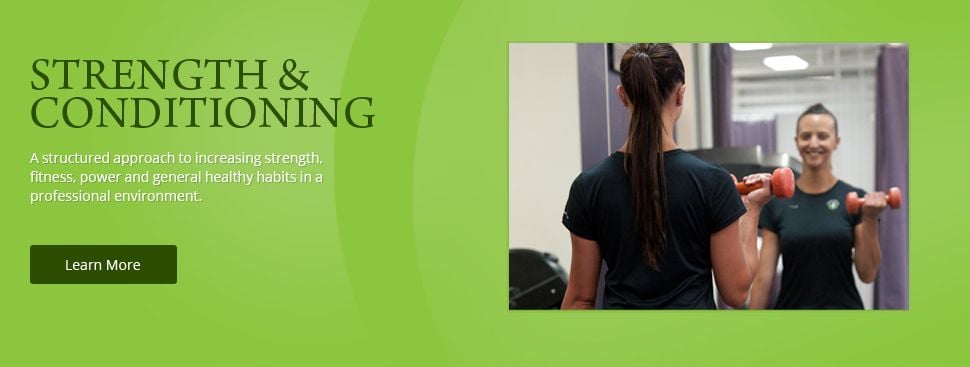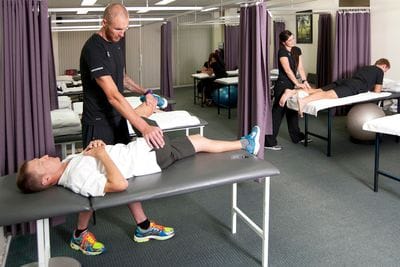Exercise Physiology
Individualised and structured exercise programs, specialised in return from injury, athletes or individuals wanting to improve performance, strength, power, speed, endurance, flexibility and/or overall lifestyle.

Using crutches
)
CRUTCHES
Crutches are a very useful piece of equipment for many lower limb injuries, however, using crutches can prove to be quite complicated for those who have never used them before, or who have never been properly educated to use crutches before.
WHY CRUTCHES?After acute lower limb injury, your Physiotherapist may advise the use of crutches to limit the load/weight on the injured limb and assist walking with near-normal technique to prevent further complications to injuries often caused by an altered gait (walking) pattern. Crutches can be used for a number of injuries, not just fractures/breaks.
There are two types of crutches, 'Axillary' (underarm, pictured on the left) and 'Forearm crutches' (supports just under the elbow and most pressure is distributed through wrist, pictured on the right).
HOW DO I USE MY CRUTCHES?
The following instructions will give you some assistance with learning how to use crutches correctly after an injury and to help you make sense of your weight bearing status.
USING 2 CRUTCHES : with two crutches, you can either be full non-weight bearing or partial weight bearing (i.e. weight bearing as tolerated).
1. Non-Weight-Bearing (NWB) = You CANNOT place the foot of your injured leg on the ground. The crutches are to act as your injured leg.
Good leg --> Both Crutches --> Good leg
2. Weight-Bearing-as-tolerated (WBAT) = You CAN place as much weight on the injured foot/leg as pain allows whilst walking. The crutches stay in-line with your injured leg at all times.
Crutches + Bad leg --> Good leg --> Crutches + Bad Leg --> Good Leg
USING 1 CRUTCH (The crutch always goes on the opposite side to the injury and using one crutch always indicates WBAT status)
1. Weight-Bearing-as-tolerated (WBAT) = You CAN place as much weight on the injured foot as pain allows whilst walking. The crutches stay in-line with your injured leg at all times.
Crutches + Bad leg --> Good leg --> Crutches + Bad Leg --> Good Leg
So now that you know how to use crutches with walking in straight, flat surfaces, how do you manage STAIRS??
The best way to remember this is "Good foot to heaven, Bad foot to Hell"
GOING UP STAIRS = Good Leg first --> crutch/s and injured foot/leg second (to the same step).
GOING DOWN STAIRS = Crutch/s and injured leg first --> Good leg second (to the same step).
A FEW IMPORTANT TIPS TO REMEMBER WITH USING CRUTCHES ON STAIRS:
1. ONLY ONE STEP AT A TIME!
2. DO NOT RUSH!
3. YOU CAN USE THE RAIL INSTEAD OF USING ONE CRUTCH IF THE RAIL IS ON THE CORRECT SIDE FOR YOUR INJURY (I.E. OPPOSITE SIDE TO YOUR INJURY)
If you think you require crutches and are still struggling to understand how to use them, come in to Active Body and see us for a demonstration!


)
)
)




